Earlier we looked at the Reeven Polariz fan controller which earned a silver seal for its performance in our recent review. Today We are going to be checking out Polariz’s close brother the Reeven Four Eyes Touch (FET). We are very interested to check out some similarities and differences between the two controllers. Reeven was also kind enough to provide us with a 120 mm Euros fan to put to the test.
We are very interested to check out some similarities and differences between the two controllers. Reeven was also kind enough to provide us with a 120 mm Euros fan to put to the test.
Unboxing
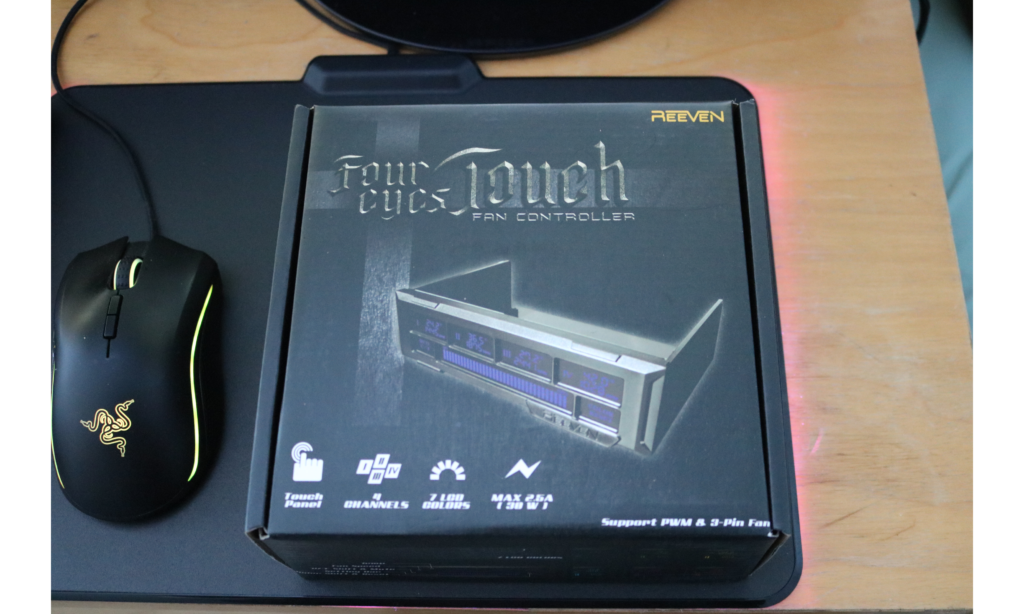 Reeven took care while packing all of the contents within the box. All the cables were tied neatly with twist ties and the fan controller was encased with foam rectangles to reduce any impact the box would have received during transport.
Reeven took care while packing all of the contents within the box. All the cables were tied neatly with twist ties and the fan controller was encased with foam rectangles to reduce any impact the box would have received during transport.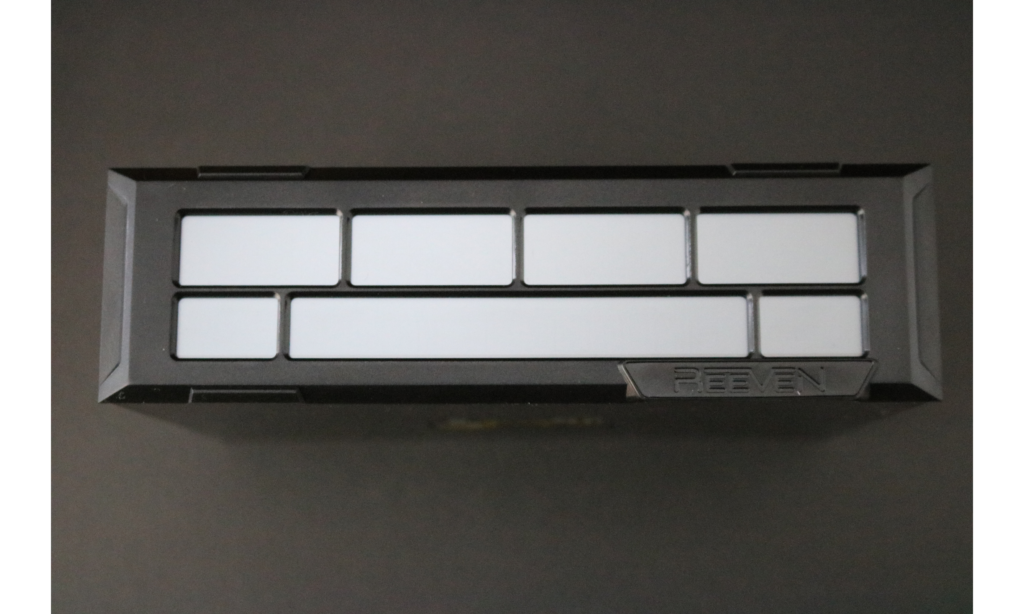 Both the Polariz and the FET are very similar when it comes to their purpose, however the two have a drastically different aesthetic appearance. Instead of being fully encased with twist knobs, our Four Eyes Touch has a touch screen and a “nothing to hide” open hardware concept.
Both the Polariz and the FET are very similar when it comes to their purpose, however the two have a drastically different aesthetic appearance. Instead of being fully encased with twist knobs, our Four Eyes Touch has a touch screen and a “nothing to hide” open hardware concept.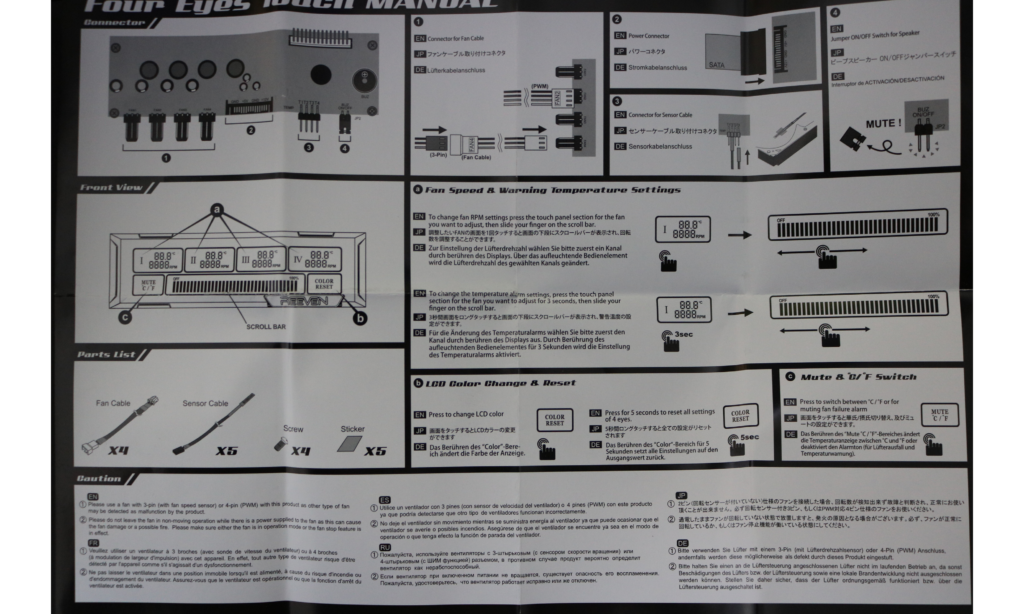 The FET controller comes with a very descriptive, six language instruction manual that tells you everything you need to know about their product. As described in the manual, four fan extension cables as well as 5 temperature sensors are included. An extra temperature sensor gives you some wiggle room if a sensor is misplaced. Reeven’s Euros 120mm fan comes packaged in a plastic case with four screws ready to be installed. As soon as we unboxed our Euros fan, it felt very flimsy. The Reeven fan is also considered to be an airflow fan as opposed to a static pressure fan.
The FET controller comes with a very descriptive, six language instruction manual that tells you everything you need to know about their product. As described in the manual, four fan extension cables as well as 5 temperature sensors are included. An extra temperature sensor gives you some wiggle room if a sensor is misplaced. Reeven’s Euros 120mm fan comes packaged in a plastic case with four screws ready to be installed. As soon as we unboxed our Euros fan, it felt very flimsy. The Reeven fan is also considered to be an airflow fan as opposed to a static pressure fan.
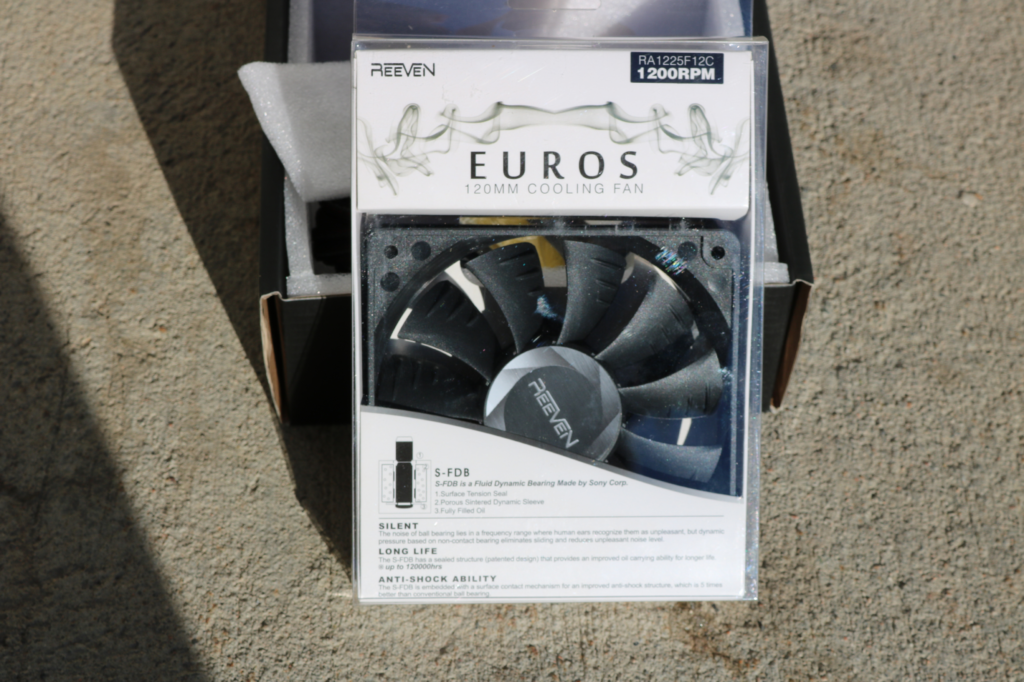 The difference between these two types of fans is very simple. Airflow fans push the air out at a very high velocity however when the air pressure is met in close proximity with a stoppage such as a HDD/SSD cage or Radiator back pressure may become an issue.
The difference between these two types of fans is very simple. Airflow fans push the air out at a very high velocity however when the air pressure is met in close proximity with a stoppage such as a HDD/SSD cage or Radiator back pressure may become an issue.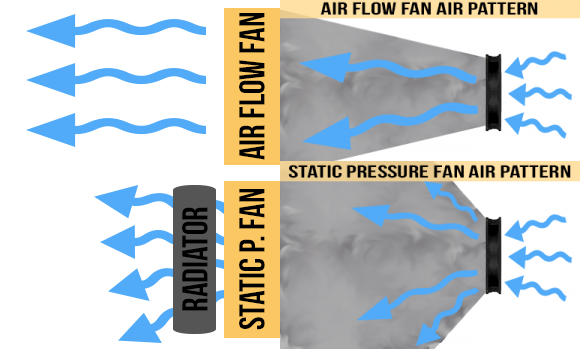 Static pressure fans are ideal for that exact situation as they push the air in a more steady pressure that will keep pressure consistent. for radiators. Instead of pushing the air out at a high velocity, they disperse air in a wider cone.
Static pressure fans are ideal for that exact situation as they push the air in a more steady pressure that will keep pressure consistent. for radiators. Instead of pushing the air out at a high velocity, they disperse air in a wider cone.
Installation
For the Four Eyes Touch installation we will be using our In Win 509 Tempered glass edition chassis. Our case has a single optical drive slot which the FET will be able to call home. 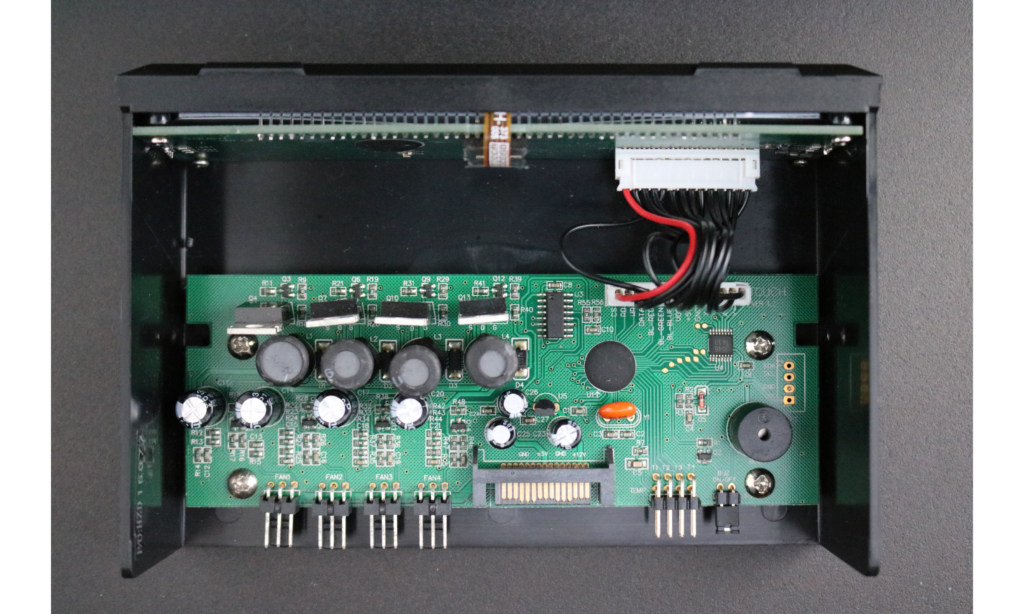 The Polariz has a max of three fans with three temperature settings as opposed to the one extra for both on our Four Eyes Touch. We really like the open concept that gives our large hands plenty of room to fiddle with cables and connectors. As you can see the fan connections are 3 prong horizontally, where as the four temperature jacks are two prong vertically and both feel very sturdy.
The Polariz has a max of three fans with three temperature settings as opposed to the one extra for both on our Four Eyes Touch. We really like the open concept that gives our large hands plenty of room to fiddle with cables and connectors. As you can see the fan connections are 3 prong horizontally, where as the four temperature jacks are two prong vertically and both feel very sturdy.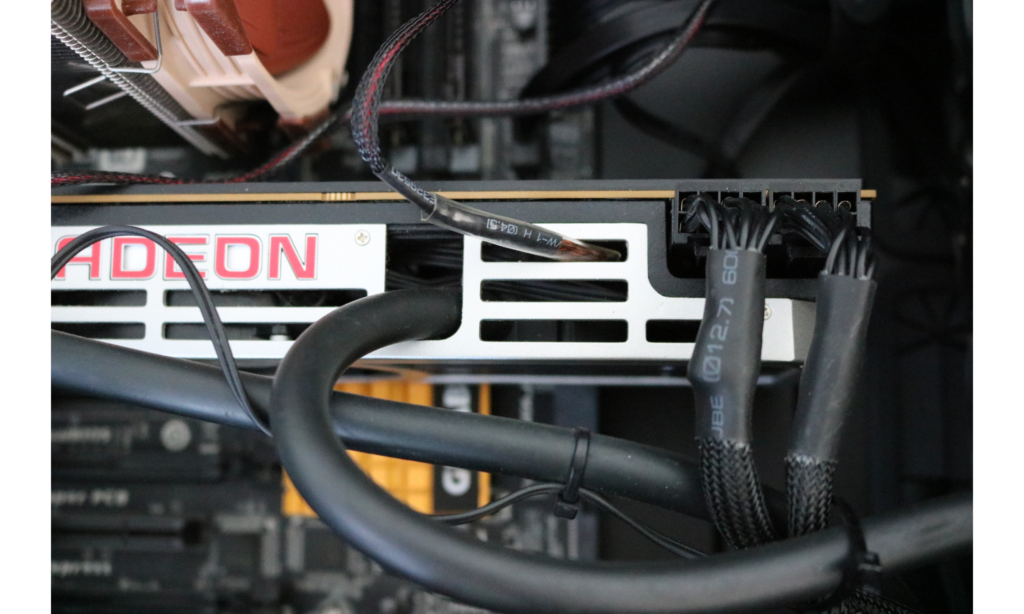 We placed our temperature monitors on the most heat intensive parts of our build. Two on our video card one on our CPU and the fourth will monitor the ambient temperature outside of the chassis. Included in our FET are 10 stickers that are meant to attach the temperature monitors to surfaces. The adhesive used on these is very weak and didn’t really stick to anything. Instead we devised a way to insert them into areas just as effectively(In between the grill on our video card!).
We placed our temperature monitors on the most heat intensive parts of our build. Two on our video card one on our CPU and the fourth will monitor the ambient temperature outside of the chassis. Included in our FET are 10 stickers that are meant to attach the temperature monitors to surfaces. The adhesive used on these is very weak and didn’t really stick to anything. Instead we devised a way to insert them into areas just as effectively(In between the grill on our video card!). 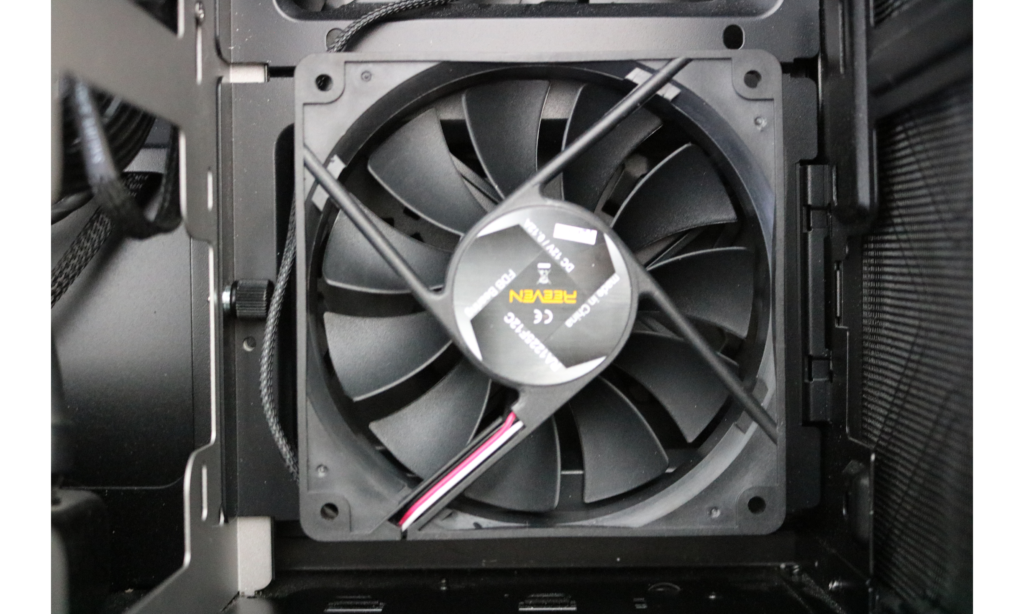 We chose to use the Reeven 120mm Euros fan as an air intake airflow fan due to its design. Previously we touched on how the fan felt a little flimsy, however once installed in our modular bays, fits and feels right at home. Three Cooler Master 120mm fans were also installed as air intake to really put the RPM to the test.
We chose to use the Reeven 120mm Euros fan as an air intake airflow fan due to its design. Previously we touched on how the fan felt a little flimsy, however once installed in our modular bays, fits and feels right at home. Three Cooler Master 120mm fans were also installed as air intake to really put the RPM to the test.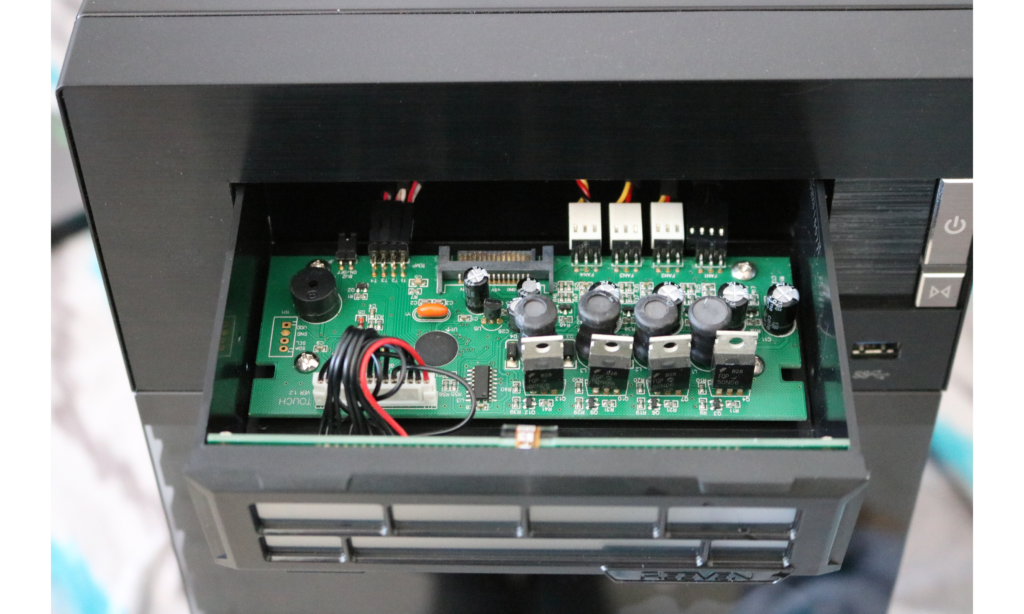 With all parts in place and four easy screws to lock our FET into place, were excited to see how it compares to the Polariz in terms of performance. As you can see we attached one of our Cooler Master fans straight up to the controller to see if there was any compatibility issues between products.
With all parts in place and four easy screws to lock our FET into place, were excited to see how it compares to the Polariz in terms of performance. As you can see we attached one of our Cooler Master fans straight up to the controller to see if there was any compatibility issues between products.
Review Overview
Design and Contents
Fan Installation
Controller Installation
Fan and Controller Compatibility/Preformance
Fan and Controller Price
Touch Time
If you are looking for an extremely simple and effective fan controller in addition to a budget fan that exceeds performance, look no further!
 Technology X Tomorrow's Technology Today!
Technology X Tomorrow's Technology Today!
